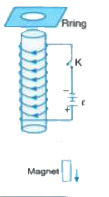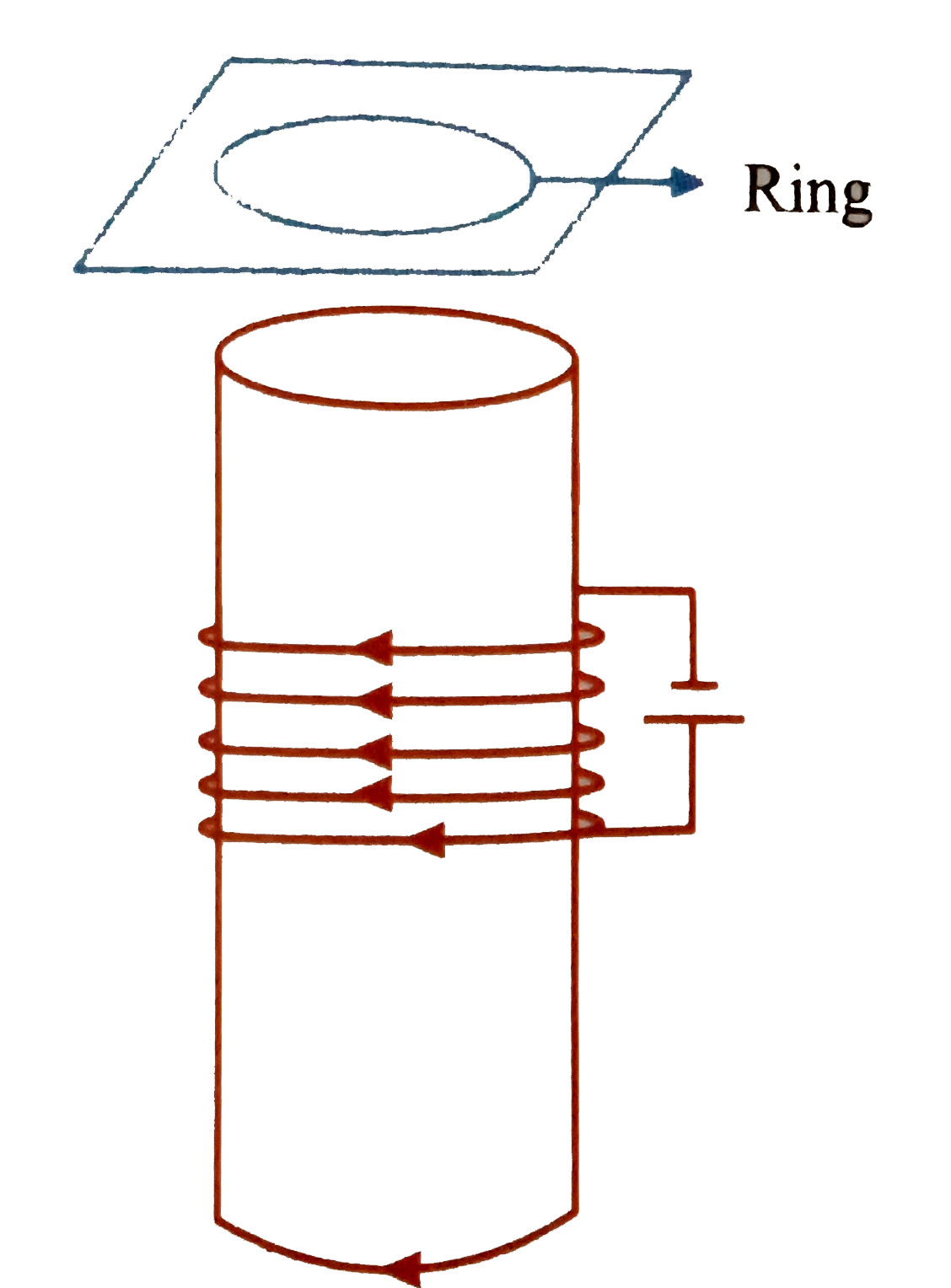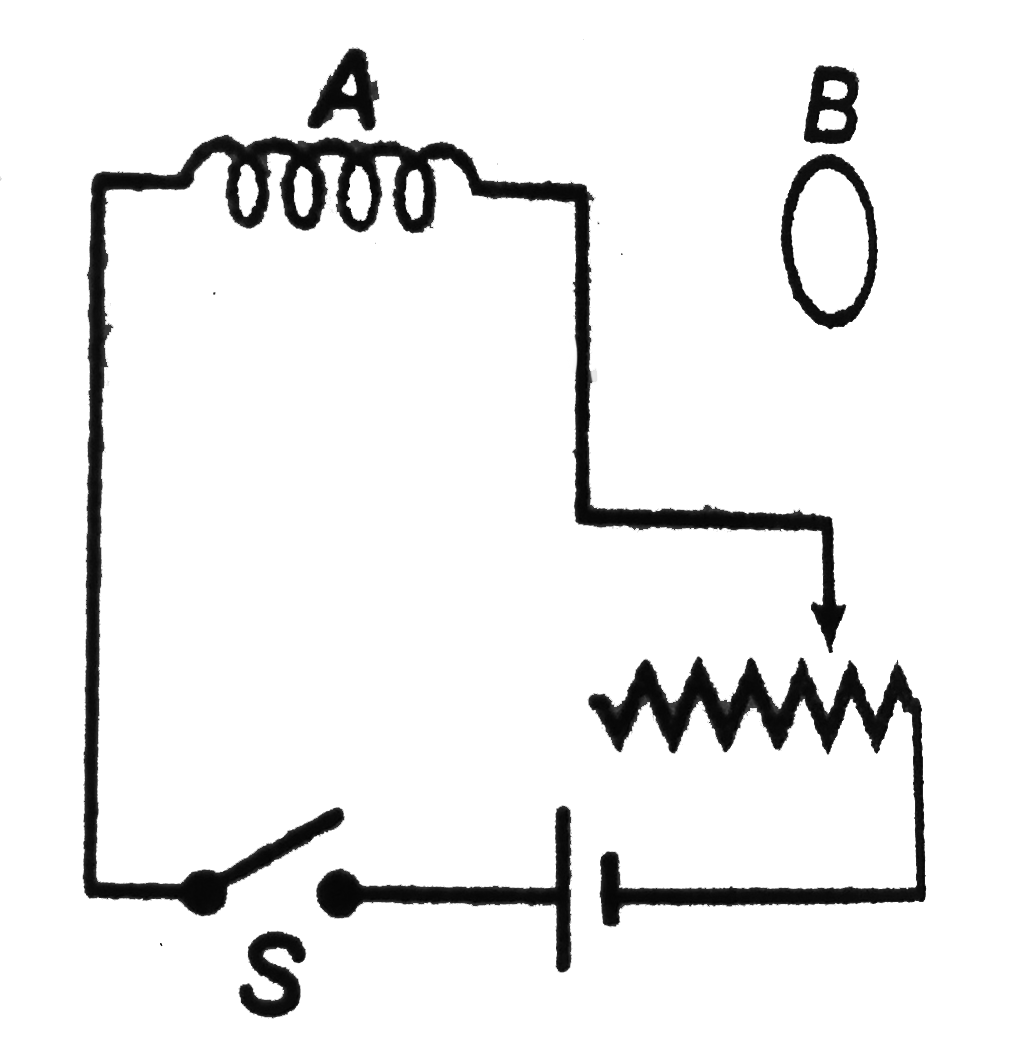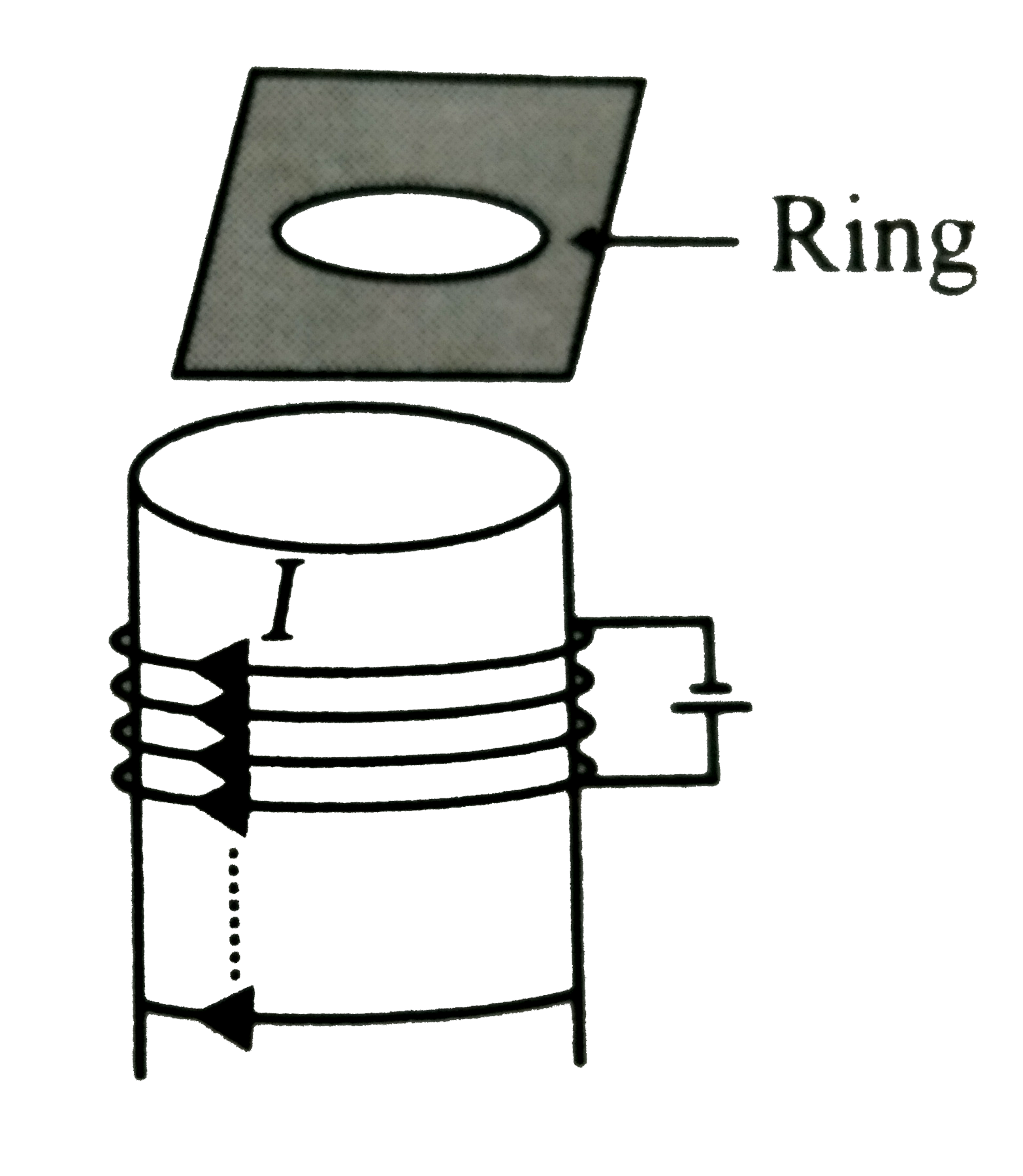Consider a metal ring kept on top of a fixed solenoid (say on a cardboard) (refer to the given figure). The centre of the ring coincides with the axis of the solenoid. If the current is suddenly switched on, the metal ring jumps up. Explain.

Initially, the magnetic flux associated with the metal ring was zero. When the current is switched on, flux passes through the ring. According to Lenz.s law this increase will be resisted and this can happen if the current in the ring is in the same direction as in the solenoid, i.e. anticlockwise (as seen from the top in the ring). Since similar poles are developed on sides of ring and solenoid facing each other, the ring moves away from the solenoid, i.e. in the upward direction.
Topper's Solved these Questions
- ELECTROMAGNETIC INDUCTIONBOOK - MODERN PUBLICATIONCHAPTER - ELECTROMAGNETIC INDUCTIONEXERCISE - NCERT FILE (NCERT EXEMPLAR PROBLEMS SUBJECTIVE QUESTIONS) (Short answer type questions)
5 Videos
- ELECTROMAGNETIC INDUCTIONBOOK - MODERN PUBLICATIONCHAPTER - ELECTROMAGNETIC INDUCTIONEXERCISE - HIGHER ORDER THINKING SKILLS AND ADVANCED LEVEL
8 Videos
- ELECTROMAGNETIC INDUCTIONBOOK - MODERN PUBLICATIONCHAPTER - ELECTROMAGNETIC INDUCTIONEXERCISE - NCERT FILE (NCERT ADDITIONAL EXERCISE)
7 Videos
- ELECTRIC CHARGES AND FIELDS BOOK - MODERN PUBLICATIONCHAPTER - ELECTRIC CHARGES AND FIELDS EXERCISE - Chapter Practice Test
15 Videos
- ELECTROMAGNETIC WAVESBOOK - MODERN PUBLICATIONCHAPTER - ELECTROMAGNETIC WAVESEXERCISE - CHAPTER PRACTICE TEST
14 Videos
Similar Questions
Consider a metal ring kept on top of a fixed solenoid (say on a cardboard) as shown in Fig. 6.28. The centre of the ring coincides with the axis of the solenoid. If the current is suddenly switched on, the metal ring jumps up. Explain.

View SolutionConsider a metal ring kept (supported by a cardboard) on top of a fixed solenoid carrying a current I (refer to the figure given in previous question). The centre of the ring coincides with the axis of the solenoid. If the current in the solenoid is switched off, what will happen to the ring?
View Solution
Knowledge Check
Consider a metal ring kept on top of a fixed solenoid (say on a carboard) The centre of the ring coincides with the axis of the solenoid. If the current is suddenly switched on then
 AThe metal ring is attractedBThe metal ring is jumped upCNo change in magnetic flux through the ring when switch is suddenly closedDCan not be decided.
AThe metal ring is attractedBThe metal ring is jumped upCNo change in magnetic flux through the ring when switch is suddenly closedDCan not be decided.The ring B is coaxial with a solenoid A as shown in figure. As the switch S is closed at t=0, the ring B
 Ais attracted towards ASBis repelled by ACis initially repelled and then attractedDis initially attracted and then repelled
Ais attracted towards ASBis repelled by ACis initially repelled and then attractedDis initially attracted and then repelledConsider metal ring kept on a horizontal plane . A bar magnet is held above the ring with its length along the axis is held above the ring with its length along the axis of the ring . If the magnet is dropped freely the acceleration of the falling magnet is : ( g is accelration due to gravity )
AMore than gBEqual to gCLess than gDDepends on mass of magnet
A metal ring kept (supported by a card borad) on the top of a fixed soleniod carry a current I as shown in figure. The center of the ring coincides with the axis of the solenoid. If the current in the soleniod is switched off, then

View SolutionThe ring B is coaxial with a solenoid A as shown in figure. As the switch S is closed at t=0, the ring B

View SolutionConsider metal ring kept on a horizontal plane . A bar magnet is held above the ring with its length along the axis is held above the ring with its length along the axis of the ring . If the magnet is dropped freely the acceleration of the falling magnet is : ( g is accelration due to gravity )
View Solutionshows a horizontal solenoid connected to a battery and a switch. A coper ring is placed on a frictionless track, the axis of the ring being along the axis of the solenoid. As the switch is closed, the ring will

View SolutionA particle of mass m is kept on the axis of a fixed circular ring of mass M and radius R at a distance x from the centre of the ring. Find the maximum gravitational force between the ring and the particle.
View Solution
